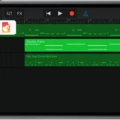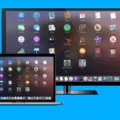Taking screenshots on your Mac can be incredibly useful, but did you know that the resolution of your screenshots can make a big difference in their overall quality? Whether you’re looking to share images with friends or colleagues, or just want to keep a record of something on your desktop, here’s everything you need to know about Mac screenshot resolutions.
Using Command+Shift+3 to Capture Full Screen
Capturing the entire screen of your Mac is easy. Just press Command+Shift+3 and you’ll have an image of whatever is currently visible on your display! By default, this screenshot will be saved as a .png file and will have a resolution of 72 DPI (dots per inch). This is great for sharing online since the image won’t take up too much storage space.
Using Command+Shift+4 to Select a Portion of the Screen
If you only need a portion of the screen, using Command+Shift+4 will give you more control. Dragging across the desired area will create a rectangle that indicates which part of the display will be captured. This screenshot (also saved as a .png) will also have a resolution of 72 DPI by default.
Using Command+Shift+4 and Spacebar to Hover Above and Pick A Window
If you want to capture a specific window or application, press Command + Shift + 4 + Spacebar. The cursor should turn into a camera icon that you can hover above any window or application – clicking will capture it as an image with 72 DPI resolution.
Adjusting Your Screenshot Resolution in Preview
If you want higher-quality images than what’s offered by default, adjusting your screenshot resolution in Preview is an easy fix! Open your file in Preview and click Tools > Adjust Size. Uncheck the “Resample Image” checkbox and type 300 into the Resolution box before clicking “OK” – this should increase the resolution from 72 DPI to 300 DPI for better-looking results! Don’t forget to save afterward with File > Save.
Changing Your Screen Resolution
Finally, if your screenshots still don’t look quite right, consider changing your screen resolution from Display Settings > Display Resolution menu. Choose the recommended native resolution for the best results!
That wraps up our guide to Mac screenshot resolutions – we hope this article helps improve your screenshots and make them look even better!

Taking High-Quality Screenshots on a Mac
Taking a high-quality screenshot on your Mac is easy. First, open the application or webpage you would like to capture. Then, press Command+Shift+3 to take a full-screen capture, Command+Shift+4 to select an area of your screen, or Command+Shift+4+Space to hover above and pick a window that you want to capture. After taking the screenshot, it will be saved as a .png file on your desktop. You can then use any image editing software (such as Photoshop) to edit and enhance the image for higher-quality results.
How to Take a Screenshot at 300 DPI on a Mac
To screenshot at 300 dpi on a Mac, you can use the Preview app which comes pre-installed with macOS. First, open the file or files you want to screenshot in Preview. Then, click on Tools > Adjust Size and uncheck the “Resample Image” checkbox. Type 300 into the Resolution box and click “OK”. Finally, click File > Save to save your screenshot at 300 dpi.
Changing Screenshot Settings on Mac
Changing screenshot settings on Mac is easy and can be done in a few simple steps. First, open the Utilities folder and launch the Screenshot app (or press Command + Shift + 5). In the app, click the Options button at the top of the menu. Here you will find different Save to options, such as Desktop, Documents, or Clipboard. Choose one of these options to save your screenshots. You can also customize other settings such as Timer delay and Show Floating Thumbnail. Once you have made your changes, click the Done button to save them. And that’s it – you’ve just changed your screenshot settings on Mac!
Finding the DPI of a Screenshot on Mac
To find the DPI of a screenshot on Mac, open the Finder file management app and navigate to the location of the file. Right-click the file and select Open With > Preview. In the Preview window, click Tools > Show Inspector. The image DPI will then be shown as Image DPI in the information list provided. This will give you an accurate reading of the resolution of your screenshot in dots per inch (DPI). You can also use this method to check other image formats such as JPEG, PNG, and TIFF.
Saving Screenshots on Mac
Screenshots taken on a Mac computer will save in the .png format. .png is a lossless file format, meaning that it preserves the quality of the image without sacrificing any details. When taking a screenshot on macOS, the image will save to your desktop with the name ”Screen Shot [date] at [time]. png”. In macOS Mojave or later, you can change the default location of saved screenshots from the Options menu in the Screenshot app or by dragging and dropping the thumbnail to a folder or document.
Screenshot Format on Mac
On Mac, screenshots are saved in the PNG (Portable Network Graphics) format by default. This is a lossless format that keeps the original quality of the image intact but can result in larger file sizes and longer loading times than othr formats like JPG.
Conclusion
In conclusion, Mac screenshot resolution is an essential factor to consider when taking screenshots on a Mac. To ensure that your screenshots appear crisp and clear, it is important to adjust the screenshot resolution to the recommended native resolution for your device. This can be done by opening the Screenshot app, accessing the Options menu, and selecting the desired Save To option. Additionally, if you want to change the resolution of an existing image file in Preview, you can uncheck the “Resample Image” box and enter a new resolution of your choice in the Resolution box before saving. By following these steps, you can be sure that your screenshots are optimized for whatever medium you are using them for.








